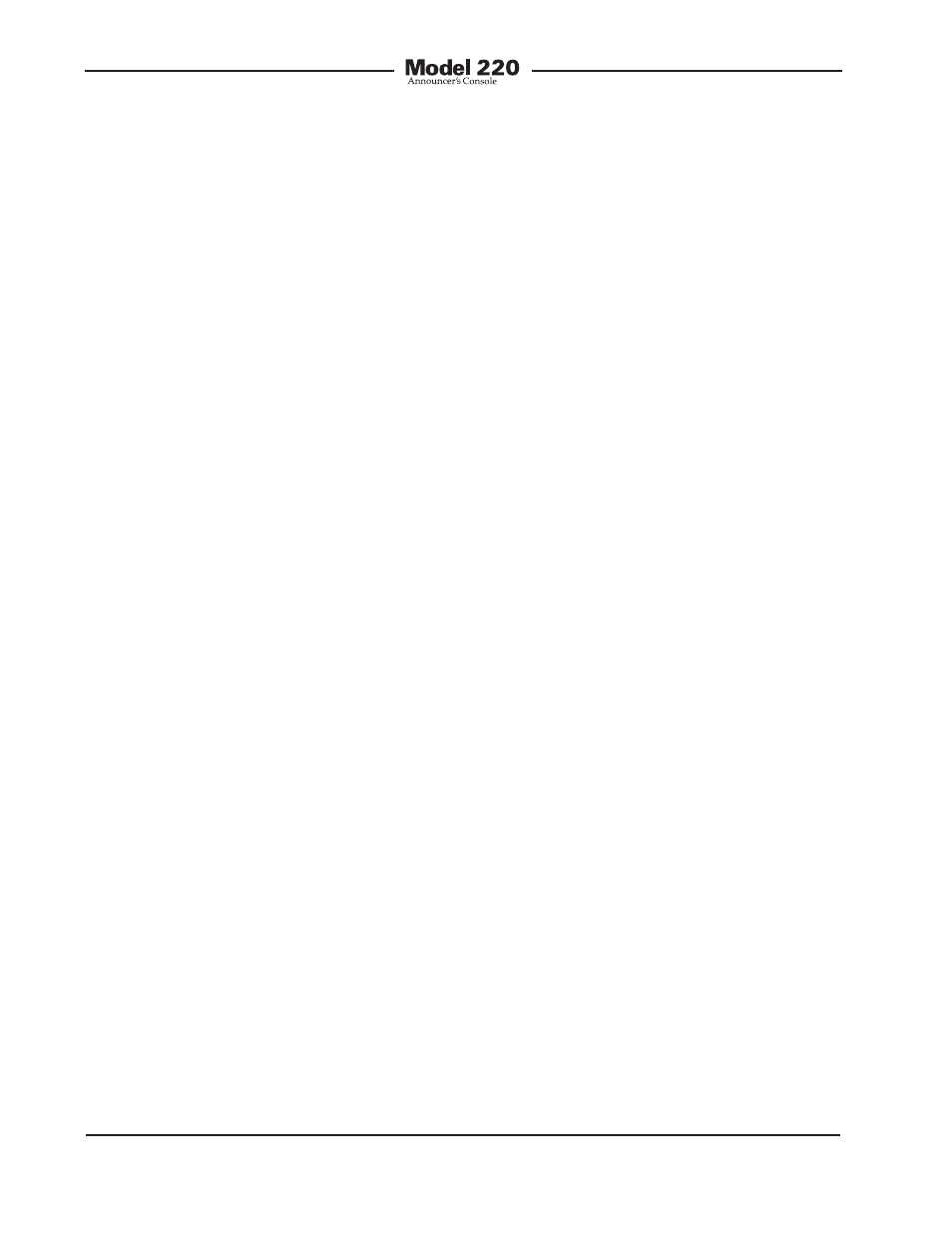Pushbutton backlighting, Remote control connections – Studio Technologies 220 2008 User Manual
Page 36

Issue 4, October 2008
Model 220 User Guide
Page 36
Studio Technologies, Inc.
Pushbutton Backlighting
For special applications, provision as been
made to allow illumination (“backlighting”)
of the three pushbutton switches. This
may prove useful for applications where
adequate room lighting is not available. It
can also serve in custom Model 220 con-
figurations. Note that this is an advanced
feature, intended only to be implemented
by a qualified technician.
From the outset several limitations must
be discussed. The first is that button
backlighting is not intended to serve
tally applications. (A common connec-
tion to power all three lamps is provided;
independent access to the lamp connec-
tions on each button is not provided.) It
is strictly intended to provide a moderate
amount of illumination to the button’s clear
lens and associated labeling. The second
restriction is that power for the backlight-
ing function cannot be provided by the IFB
input—there is simply not enough cur-
rent available from a typical IFB circuit to
power the Model 220 and light the lamps.
However, power from the external 24 volt
DC source can be used. This requires that
this power source be connected whenever
backlighting is desired.
From the factory, lamps (“bulbs”) are not
installed in the pushbutton housings.
They are pluggable T-1 bi-pin type and
are simple to install. The mating socket is
accessed by removing the button’s lens
caps, graphic label, and back frosted
lens. Compatible incandescent lamps with
a nominal rating of 18 volts, 28 mA are
available from Studio Technologies (part
number 12030). Bulbs with other nominal
voltages should also be available from
electronics parts vendors. While compat-
ible LED-based lamps are probably also
available, incandescent lamps, when pow-
ered below their rated current and voltage,
can provide extremely long and reliable
operation.
A 3-position header connector, labeled
P20, is located on the Model 220’s main
printed circuit board. It provides access
to, and a means to power, the three lamps.
Pin 1 of the header is connected to the
common point of the Model 220’s circuitry,
which is also connected to one contact on
all the lamps. Pin 2 of the header is con-
nected to the other contact on the lamps.
Pin 3 is connected, by means of a current
limiting resistor, to the external 24 volt DC
source. If lamps were obtained from Stu-
dio Technologies then adding a “jumper”
from pin 2 to pin 3 is all that is required
to get things going. A standard 0.1-inch-
center jumper, commonly used on elec-
tronic equipment, is all that is required. A
200 ohm, 2 watt resistor is electronically
in series between the external 24 volt DC
input and pin 3 of the header. When used
with the lamps available from Studio Tech-
nologies, the resistor limits the lamp cur-
rent to approximately 65 mA. This lights
the lamps to a moderate intensity. If a
different type of lamp is installed, its power
source should be connected to pins 1
(common) and 2 (lamps) of the header.
Remote Control Connections
Provision has been made on the Model
220’s printed circuit board assembly to
allow external switches or contact closures
to control the main and talkback output
functions. Two 3-position headers, labeled
P17 and P18, provide access to the cir-
cuitry associated with the functions.
P17: Pin 1 is connected to the common
point of the Model 220’s circuitry. Pin 2
is connected to the circuitry associated
